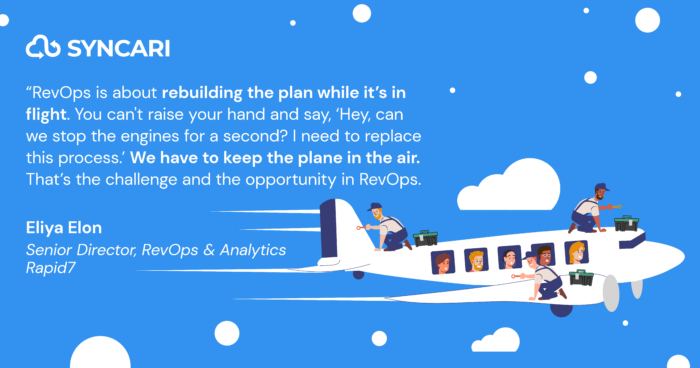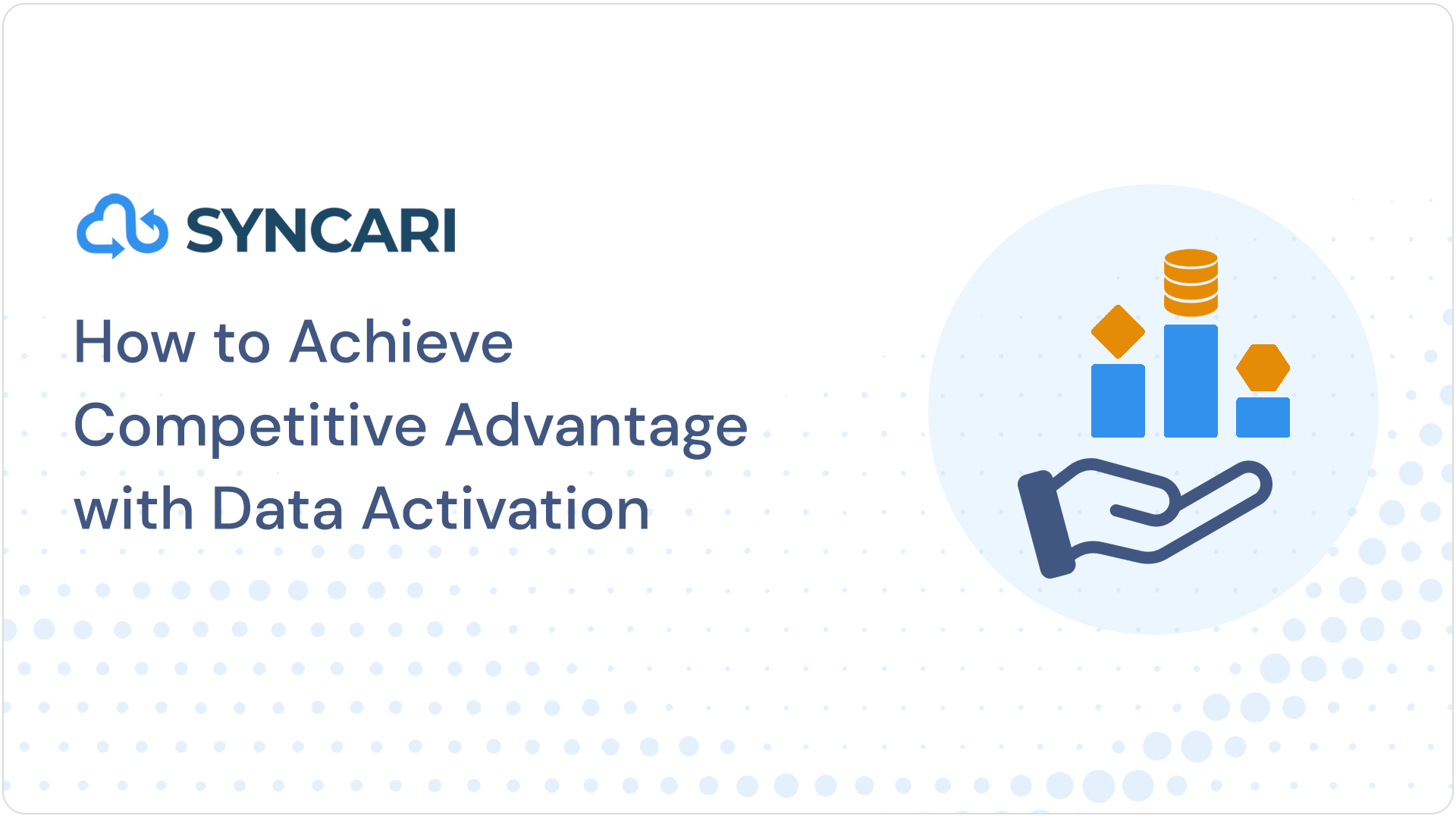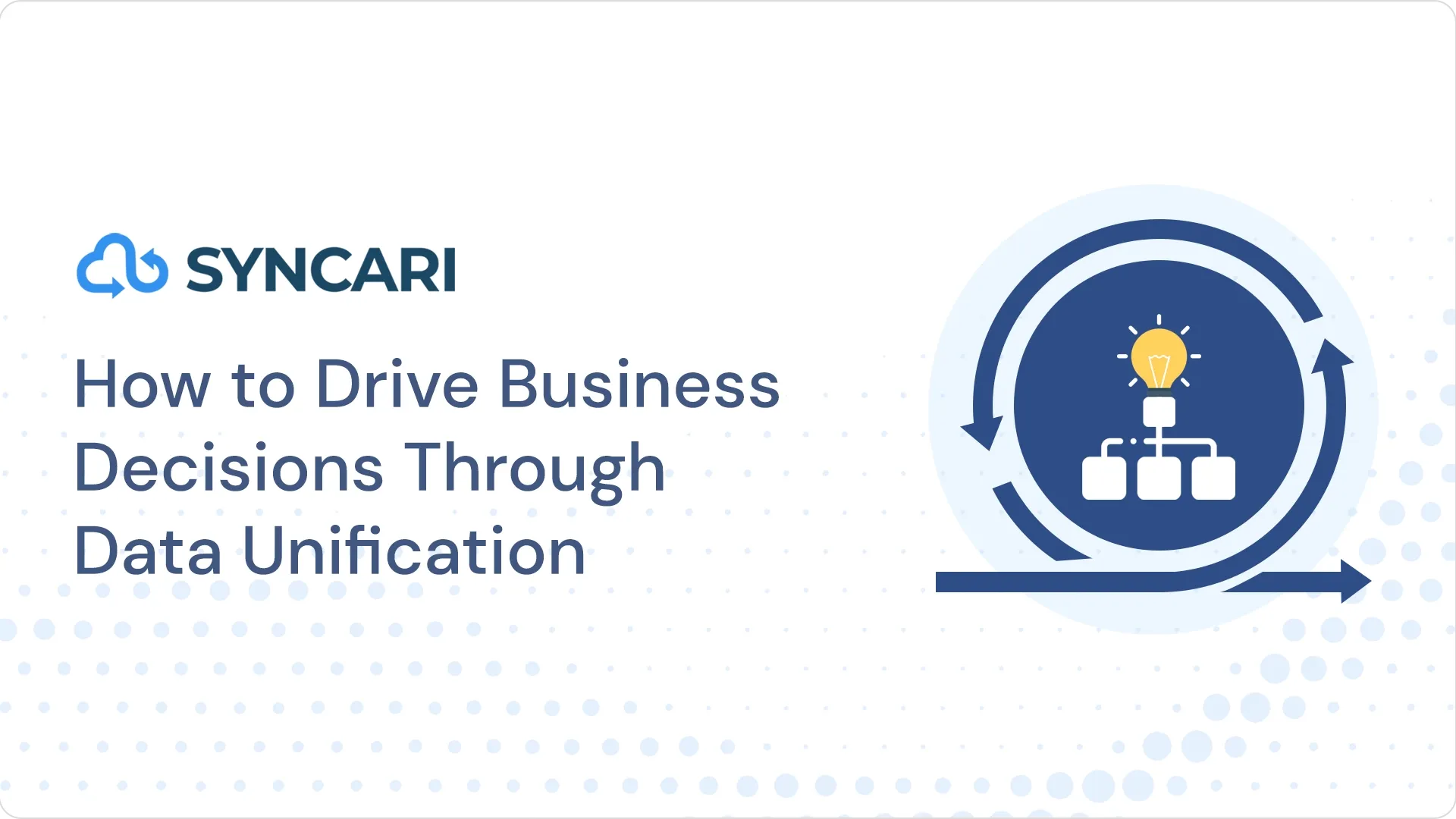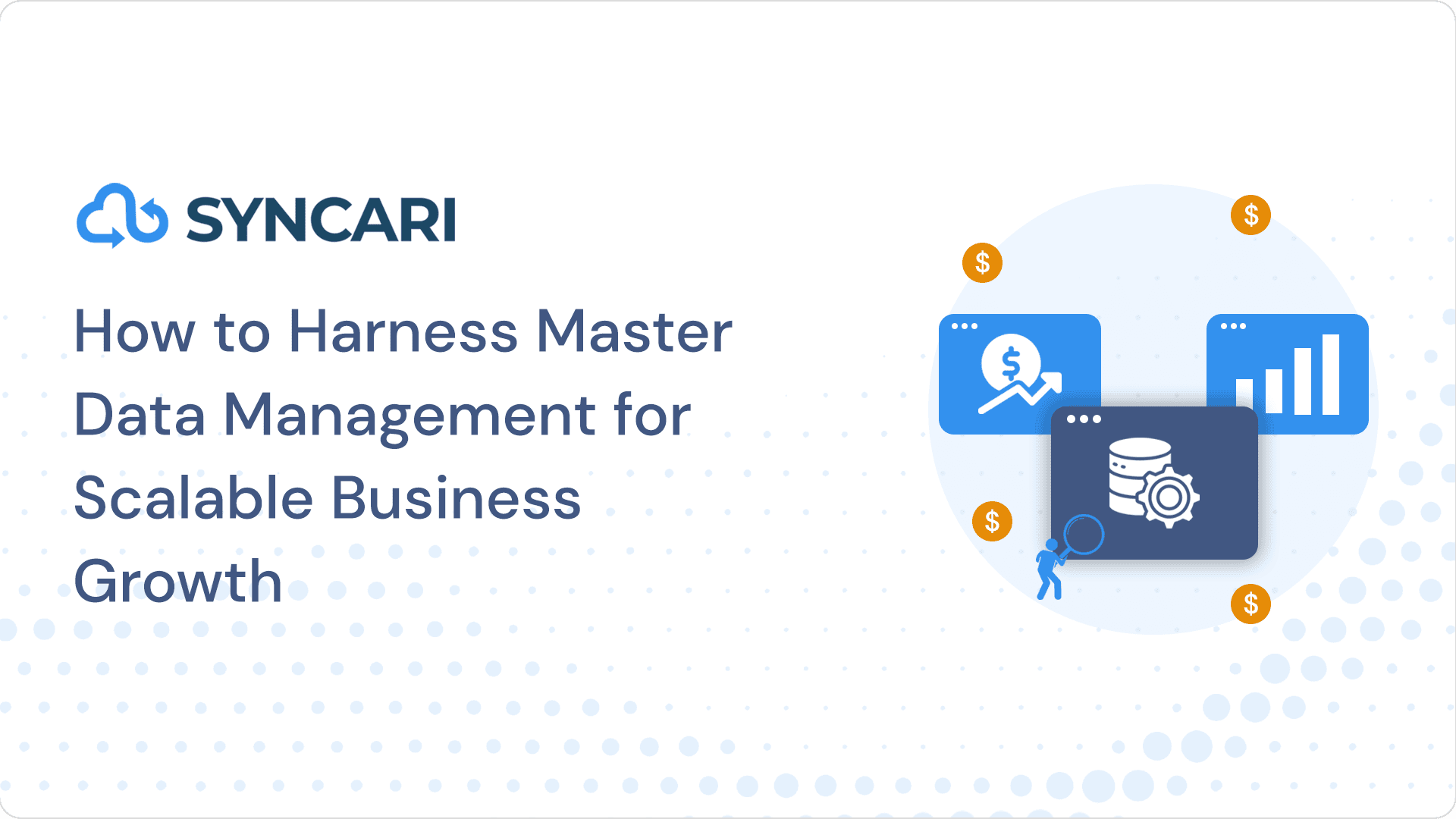Eliya Elon has been blazing trails since he was a teenager. His career kickstarted when he was 15: “My parents went bankrupt so I dropped out of school to work,” he explains. “I started my first business—the second CrossFit gym in Israel.” Through grit and determination, Eliya carved out a successful career—from the fitness industry to the military and finally cybersecurity.
Today, Eliya is the Senior Director of RevOps & Analytics at Rapid7, a firm that helps security teams monitor malicious behavior, investigate and shut down attacks, and automate routine tasks. From gym racks to data governance, Eliya has applied his singular focus to leading organizations to frictionless customer journeys and data excellence.
In this article, Eliya shares his best secrets on how he continually improves processes while keeping the RevOps plane flying, why defining terms will make or break your data, and how to relieve the burden of process debt as your organization scales.
Nick: How important are clear definitions in RevOps?
Eliya: They are one of the most important things. At any classic venture-capital-backed high-growth startup, people take certain things for granted. They often will operate under assumptions that were once viable but have since fallen out of usefulness. It’s RevOps’ job to ensure we’re thinking critically about our data—how we’re collecting it, what we’re collecting, and how we’re presenting it. We must uncover: What are our hidden assumptions?
To that end, you need to step back and create language at the executive level that everyone agrees on. We need to agree on what terms like conversion rate, funnel efficiency, ROI analysis, customer lifetime value, and core analysis actually mean before we can generate any of them effectively.
Defining these terms makes two activities immediately easier:
1. Collaborating across functions
Definitions make collaboration possible. Marketing measures impressions. Sales measures leads. But what’s your organization’s definition of those terms and how do they impact ROI analysis? I know operations folks who’ve spent over a month defining what a customer is. It may seem simple, but it’s only through unified language that you can collaborate effectively.
2. Gaining objective data
Unified definitions lead to unifying metrics—those metrics that can be measured objectively and interpreted clearly. Define your objective language and test it. Implement campaigns with those defined terms. Then ask yourself, did those definitions serve your go-to-market teams as intended? If they didn’t, was it a slow quarter or an inaccurate way of defining those metrics? With a good testing framework, you can prove you’re executing well and making a difference. This process will make your data more trustworthy and will embolden your leaders to invest in operational excellence.
Why do B2B businesses struggle with first-party data? How do we fix it?
As companies grow, they often grow in disparate, hierarchical structures. There is no single, unified language you can use to dissect the entire business. Marketing and lead generation, sales and customer success, product and finance—each team has developed slightly different structures to define their success. When your categories and form fields are different across functions and you hand that data to an analyst, it’s no wonder they’re confused and can’t get a handle on your first-party data.
One of the biggest projects I’m co-leading right now is our ‘account contact 360’ project. The goal is to create a unified view of the customer from the perspective of every function in the company. Who is our customer according to finance, human resources, sales, marketing, and product data? Where do we hold our golden record of that data? And what are the processes, architecture, and systems that make that data possible?
From there, we’re defining how best to extract that data and redistribute it back into our analytical systems for reporting KPIs and dashboards. The final stage is to introduce machine learning and predictive workloads and keep the cycle of data moving efficiently. These are not easy tasks, but we’ve prioritized this major project because investing in data excellence will pay dividends in the future.
RevOps professionals are constantly chasing a single source of truth. How do you get closer to achieving this?
Outside of a product like Syncari, I believe in the ‘hub and spoke model.’ The customer is an evolving entity, so the closer the data source is to the customer, the more useful that data will be. For example, your sales team relies on the customer data held in Salesforce, but they’re unlikely to need all 300 attributes of each customer. The same goes for a customer in the prospect stage of their lifecycle—we should use Marketo as the source of truth for those customers over other systems. As that prospect evolves into a late-stage pipeline deal for the sales organization, senior people are spending a fair amount of time with that prospect. So I’d trust the qualitative and the quantitative data that is in Salesforce over Marketo. Those are your spokes.
You’ll maintain all that data in a cloud data warehouse and redistribute the relevant subset of data to the operational teams that actually need to activate them. This is your hub. In the case of a dispute, we consider where customers are in their lifecycle and assume that the closer the data source is to the customer, the more accurate that data will be. In an ideal world, your central source of truth pulls its data from these operational systems, applying conditional logic to coincide with wherever the customer is in their journey.
The most important thing to remember is that all these complex processes are in service of one goal: Your customers want a frictionless experience. They want to be heard, understood, and have their problems solved. Do that and you’ve already won.
How does process debt impact operations teams? What can they do to alleviate the strain?
Thinking about process debt as accounts to balance has helped me tremendously. For example, in order to create a forecasting process, we need to take on some debt. We need to spend time thinking, putting together a Google sheet, and making some choices that affect other people’s workloads. Each decision costs something and as we make them, the negative balance on our account grows.
To start forecasting, we accept that the current Google Sheet system will work for five sellers but it won’t scale to 15. We can’t scale it to more than one layer of management or collaborate with more than 10 people. But we have a huge win—we could not do forecasting before and now we can.
In Ops, we constantly withdraw from these different accounts—tech, process, data, and people. It’s our responsibility as Ops leaders to make sure we’re seeing a return on the debt we’re taking on and paying off some of that debt before we take on more.
In this forecasting scenario, you built that little forecasting Google Sheet that worked superbly from zero ARR to $1 million ARR. Now, before you go and implement a new platform to scale that process—and take on more debt—you need to think long and hard about how you’ll retire some debt and responsibly take on more. Is this process debt balancing out? I’ve seen companies go through an eight-month implementation process all to return to their spreadsheets. If you think about process debt as real accounts with real consequences, it’s easier to keep them balanced and manage debt responsibly.
What are your favorite books right now?
PRINCIPLES: Life & Work by Ray Dalio. I give this book to people who are self-driven and analytical. Ray Dalio gives us a framework to improve ourselves and capture the operating principles that govern our lives.
I also suggest Noise: A Flaw in Human Judgment by Daniel Kahneman. In human decision-making, there are two types of errors we can make—bias and noise. This book has several applications to business that demonstrate how noise is the most expensive type of error and how you can understand and negate it.
My final recommendation is Amp It Up by Frank Slootman. Frank writes about his experience as the CEO of Snowflake and his philosophy around holding people accountable and creating a culture of ‘drivers’ instead of ‘passengers’ in your organization. This book is for anyone in leadership who aspires to create a culture of excellence.

How do you keep your team engaged as your company scales quickly?
My COO at Rapid7 uses this great analogy: RevOps is about rebuilding the plane while it’s in flight. You can’t raise your hand and say, “Hey, can we stop the engines for a second? I need to replace this process.” We have to keep the plane in the air. That’s the challenge and the opportunity. To encourage my team, I focus on two things: perspective and excitement.
1. Perspective
When someone comes to me with a fire, I ask myself a few questions: Will stopping to fix this truly move the needle? Will this still be a problem in three hours or three months? When you put things in perspective, issues that loomed large start to feel manageable. Then I narrow our focus to one, two, or three deliverables in a week, month, or quarter.
I also encourage my team to deprioritize other tasks in an exaggerated way. Sometimes we need to show our colleagues that deprioritizing some things leads to urgency and helps us focus on what’s most important. Having a little perspective keeps everyone sane.
2. Excitement
There is a lot of growth happening around us. It’s a symptom of being at the right company, in the right market. We have the pleasure and opportunity to solve the best challenges—we get to play the best game against world-class competitors. In the end, I love to encourage my team to see our work as solving puzzles. Puzzles are always fun.
Want to connect with Eliya? Follow him on LinkedIn.


